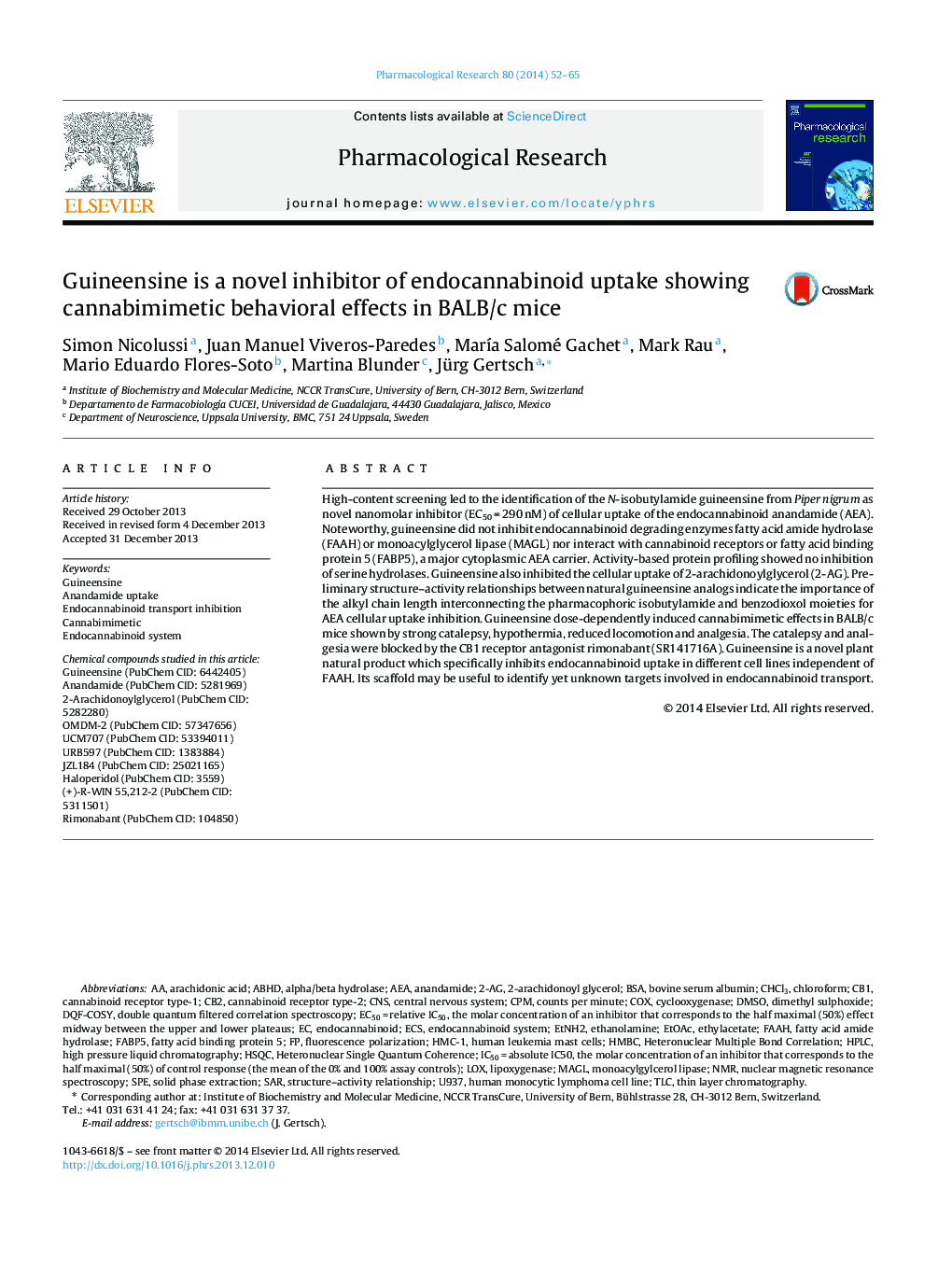| کد مقاله | کد نشریه | سال انتشار | مقاله انگلیسی | نسخه تمام متن |
|---|---|---|---|---|
| 2561990 | 1560859 | 2014 | 14 صفحه PDF | دانلود رایگان |

High-content screening led to the identification of the N-isobutylamide guineensine from Piper nigrum as novel nanomolar inhibitor (EC50 = 290 nM) of cellular uptake of the endocannabinoid anandamide (AEA). Noteworthy, guineensine did not inhibit endocannabinoid degrading enzymes fatty acid amide hydrolase (FAAH) or monoacylglycerol lipase (MAGL) nor interact with cannabinoid receptors or fatty acid binding protein 5 (FABP5), a major cytoplasmic AEA carrier. Activity-based protein profiling showed no inhibition of serine hydrolases. Guineensine also inhibited the cellular uptake of 2-arachidonoylglycerol (2-AG). Preliminary structure–activity relationships between natural guineensine analogs indicate the importance of the alkyl chain length interconnecting the pharmacophoric isobutylamide and benzodioxol moieties for AEA cellular uptake inhibition. Guineensine dose-dependently induced cannabimimetic effects in BALB/c mice shown by strong catalepsy, hypothermia, reduced locomotion and analgesia. The catalepsy and analgesia were blocked by the CB1 receptor antagonist rimonabant (SR141716A). Guineensine is a novel plant natural product which specifically inhibits endocannabinoid uptake in different cell lines independent of FAAH. Its scaffold may be useful to identify yet unknown targets involved in endocannabinoid transport.
Figure optionsDownload high-quality image (221 K)Download as PowerPoint slide
Journal: Pharmacological Research - Volume 80, February 2014, Pages 52–65